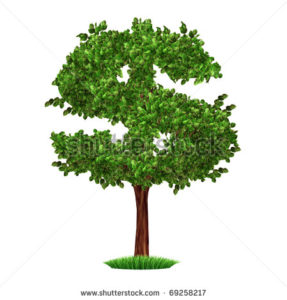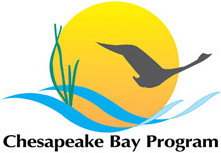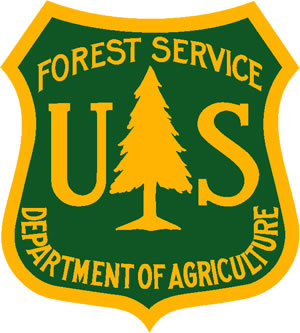Fund Your Buffer

Riparian forest buffers are among the best practices for improving stream health and water quality per dollar invested.
Direct costs of forests buffers include:
- site preparation,
- trees,
- planting tools such as stakes and tree tubes, and
- long-term maintenance.
Agricultural producers may also assume a loss in income from taking land out of agricultural production. From an agricultural producer perspective, these costs can make forest buffers cost-prohibitive. For ranchers, the expenses increase with the additional costs of exclusionary fencing, water crossings, and alternative water sources.
There are voluntary conservation programs and grants available to partially or completely offset these costs.
Federal Financial Assistance Programs
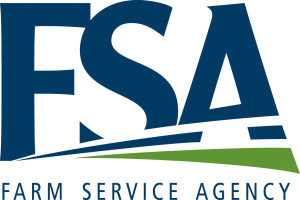 |
USDA Farm Service Agency (FSA) Conservation Reserve Enhancement Program (CREP) provides landowners with financial incentives and technical support to remove land from agricultural production and implement conservation practices that help protect water and soil. Contracts are voluntary and generally last between 10 and 15 years. Landowners are paid a generous annual rental rate for each year they are in the contract. CREP also provides cost share assistance that often covers the full cost of implementing conservation practices. |
 |
USDA Natural Resources Conservation Service (NRCS) Environmental Quality Incentives Program (EQIP) is a voluntary program that helps landowners plan and implement conservation practices by providing financial and technical assistance. It offers flexible terms for contracts, with a maximum agreement length of ten years. Landowners receive financial assistance based on the average implementation cost of the practice. There is a wide diversity of conservation practices in this program which address natural resource concerns like water and air quality, soil erosion, nutrient management, and wildlife habitat. |
 |
NRCS’ Agricultural Conservation Easement Program (ACEP) provides financial and technical assistance to assist landowners in protecting and restoring wetlands. Eligible lands may be current or former wetlands, where it is possible for degraded hydrologic functions to be restored and made suitable for wildlife habitat. There are three enrollment options for this program- a permanent easement, a 30 year easement or a restoration cost-share agreement that lasts for 10 years. In each case, the USDA helps to pay easement and restoration costs; the amount varies based on the length of the agreement. |
 |
NRCS’ Healthy Forests Reserve Program (HFRP) helps landowners restore, enhance, and protect forestland on their property through financial assistance and easements. This program promotes the recovery of endangered and threatened species, improving plant and animal diversity, and enhancing carbon sequestration. There are three enrollment options for this program- a permanent easement, a 30-year easement or a restoration cost share agreement that lasts for 10 years. |
 |
NRCS’s Conservation Stewardship Program (CSP) promotes buffers as a part of a suite of enhancements designed to maintain or exceed the quality criteria, or stewardship level, for the resource concern. Most of the agriculture producers that are approved to participate in CSP have already been implementing conservation practices on their land. CSP steps in and offers enhancements for those practices. In the case of a riparian buffer, CSP could help widen the buffer or improve its efficiency. |
Maryland Programs
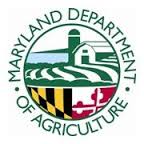 |
Maryland Agricultural Water Quality Cost Share (MACS) Program provides up to 37.5% cost share of the eligible costs of planting a riparian forest buffer. This program is to be combined with enrollment in CREP. This program is managed by the Maryland Department of Agriculture. |
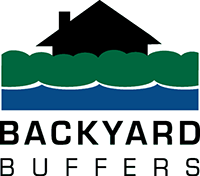 |
Backyard Buffers provides a free bag of 20 to 30 native tree and shrub bare-root seedlings to landowners who have streams or other waterways on or adjacent to their property. This program is for smaller landowners who are not eligible for agricultural cost share programs, and is not available in all counties. Program managed by Maryland Department of Natural Resources (DNR) Forest Service and Potomac Conservancy. |
 |
Maryland Department of Agriculture’s Conservation Buffer Initiative is a pilot program that provides a new funding option for farmers who want to plant streamside buffers on their farms to improve the health of local streams and the Chesapeake Bay. The program includes include attractive incentive payments, a buffer option for field ditches, more flexible site management, and shorter contract terms. |
 |
The Maryland Department of Natural Resources’ Chesapeake and Atlantic Coastal Bays Trust Fund allows Maryland to accelerate Bay restoration by focusing limited financial resources on the most efficient, cost-effective non-point source pollution control projects, such as forest buffers. |
 |
The Healthy Forests Healthy Waters program is a collaborative tree planting initiative between the Alliance for the Chesapeake Bay, the Maryland Forest Service, the Maryland Forestry Foundation, and private landowners throughout Maryland. The program provides participating landowners with a free, turnkey tree planting project of an acre or more on open land that they want to convert into a forest. |
New York State Programs
 |
The Upper Susquehanna Coalition Buffer Team offers innovative and flexible programming to support riparian forest buffers in collaboration with local soil and water conservation districts. |
 |
The Buffer in a Bag program provides organizations and private landowners with free tree and shrub seedlings to help establish, or improve, a stream buffer on their property. Plantings alongside waterbodies create wildlife habitat and improve water quality. |
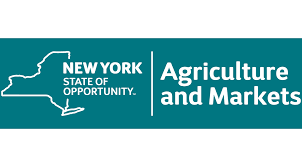 |
The Agricultural Non-point Source Abatement and Control Program is a cost-share grant program that provides funding to address and prevent potential water quality issues that stem from farming activities. Financial and technical assistance supports the planning and implementation of on-farm projects, including riparian forest buffers. |
 |
The Climate Resilient Farming (CRF) Program aims to reduce the impact of agriculture on climate change (mitigation) and to increase the resiliency of New York State farms in the face of a changing climate (adaptation). Program grant funds are available for projects that mitigate the impact of agriculture on climate change for greenhouse gas emissions reduction and carbon sequestration, in addition to enhancing the on-farm adaptation and resiliency to projected climate conditions due to heavy storm events, rainfall, and drought. |
 |
The Water Quality Improvement Project (WQIP) program is a competitive, statewide reimbursement grant program that funds projects that directly improve water quality or habitat, promote flood risk reduction, restoration, and enhanced flood and climate resiliency, or protect a drinking water source. |
Pennsylvania Programs
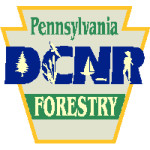 |
Department of Conservation and Natural Resources Riparian Forest Buffer Program provides grants to organizations working with landowners and municipalities to establish riparian forest buffers. Eligible applicants include local governments and non-profits or educational organizations working in Pennsylvania. Eligible grant activities include landowner outreach, buffer design, site preparation and buffer installation, plant materials, tree shelters, and short-term maintenance. |
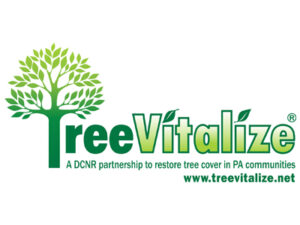 |
TreeVitalize is a program to restore tree cover in Pennsylvania communities. This program is for projects not eligible for agricultural cost-share programs. Managed by the Pennsylvania Department of Conservation and Natural Resources (DCNR). |
 |
Pennsylvania Department of Environmental Protection Growing Greener Watershed Protection Grants fund watershed conservation projects. |
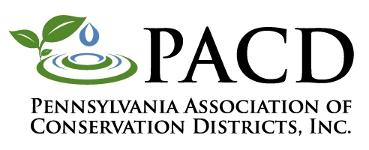 |
Pennsylvania Association of Conservation Districts’ CREP Mini-grant Program for Conservation Districts funds conservation districts to implement education and outreach activities to extend the work of the Conservation Reserve Enhancement Program. |
 |
Pennsylvania Association of Conservation Districts’ Multifunctional Riparian Buffer Sub-grant Program provides funding to conservations districts to install multifunctional forest buffers in conjunction with landowners. |
 |
The Chesapeake Bay Foundation’s Keystone 10 Million Trees (K10) Program has a goal of planting 10 million trees in Pennsylvania, primarily in riparian areas, by 2025. Registered K10 partners can receive free trees and supplies for planting. |
Virginia Programs
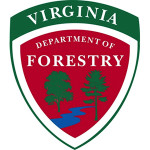 |
The Riparian Buffer Tax Credit is available to landowners for preserving riparian forest buffers along waterways during a timber harvest operation. Landowners may apply for a tax credit equal to 25% of the value of the timber (or up to $17,500) within a riparian forest buffer. A buffer must be between 35 and 300 feet wide and must be intact for at least 15 years. The landowner must also have a Virginia Department of Forestry (VDOF) approved stewardship management plan. |
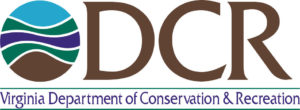 |
Virginia Agricultural Cost Share (VACS) FR-3 and FR-3M Program is available to landowners for stream exclusion and alternative watering systems. The stream exclusion fence must be setback a minimum of 35 feet. Landowners may receive up to 75% cost share, as well as a tax credit of 25% of eligible out of pocket expenses after cost share payment. |
 |
The Virginia Trees for Clean Water Program is established to encourage the creation of long-term, sustained canopy cover to improve water quality across the Commonwealth. This grant is used to fund tree-planting efforts that raise public awareness of the benefits of trees and impacts on water quality. Eligible recipients include civic groups, communities, local government, nonprofit organizations, neighborhood associations, public educational institutions, state agencies, tribal organizations and volunteer groups. The program is managed by the Virginia Department of Forestry. |
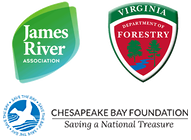 |
Through the James River Buffer Program, the James River Association and the Chesapeake Bay Foundation are working with landowners across the middle and upper James watershed to restore or create forest buffers that improve the quality of local waterways. |
 |
Trout Unlimited’s Upper James River Home Rivers Initiative targets headwater properties in Highland and Bath counties for stabilizing streambanks and restoring riparian buffers. |
 |
The DOF Riparian Forests for Landowners (RFFL) program provides flexible, no-cost riparian forest buffer installation and one year of maintenance to landowners. The program is being implemented by DOF and partner organizations in a unique watershed-based partnership.Funding is provided by the Inflation Reduction Act through the USDA Forest Service and the Commonwealth of Virginia’s Water Quality Improvement Fund Act. |
 |
The Headwater Stream Initiative is a joint project of The Piedmont Environmental Council and Friends of the Rappahannock. We work together to provide free technical assistance, project design, materials, and labor for the planting of native trees and shrubs in riparian zones on properties in the headwater counties of the Rappahannock River. |
 |
The Virginia Department of Forestry maintains an online portal that shows landowners which programs and providers are potentially available for tree planting services or financial support (including tax credits for preserving existing forests) for tree planting along rivers, streams and lakes in Virginia. |
 |
A partnership of The Piedmont Environmental Council (PEC) and Friends of the Rappahannock (FOR), Plantings for the Piedmont supports qualifying landowners in the planting of native trees and shrubs on their property. From beginning to end, we help with material, labor and financial assistance. We connect landowners to third-party cost-share programs, and PEC grant funding helps cover other project costs. Qualifying properties are those that lie in the headwater counties of the Rappahannock, Potomac, James and York river watersheds: Rappahannock, Fauquier, Culpeper, Madison, Greene, Orange, Loudoun and Clarke counties. |
West Virginia Programs
|
Through the Carla Hardy WV Project CommuniTree, Cacapon Institute provides trees, training, and planning assistance. Volunteer groups make a planting plan and organize to pick up the trees then plant and care for them. |
|
|
The Safe Water Conservation Collaborative is a vibrant network of 25+ water utilities, land conservation organizations, and community partners collaborating on land conservation and stewardship practices to protect safe, clean drinking water for communities in the Eastern Panhandle of West Virginia. The Collaborative works with landowners in Jefferson and Berkeley County who have water on their property that may be in need of a riparian buffer and who want to help improve the water quality in their area. The Collaborative works with landowners to design a planting plan, including specific tree species, and offer support to ensure maintenance for a period following installation, all at no cost to the landowner. |
Grant Programs
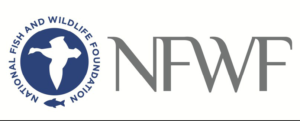 |
National Fish and Wildlife Foundation (NFWF) Chesapeake Bay Stewardship Fund awards grants under two categories: Small Watershed Grants (SWGs) and Innovative Nutrient and Sediment Reduction Grants (INSRs). SWGs are projects that promote community based efforts to protect and restore natural resources of the Chesapeake Bay and its tributary rivers and streams. INSRs are awarded to projects that dramatically accelerate nutrient and sediment reductions through innovative, sustainable, and cost effective methods, approaches, and technology. The Fund is a partnership between NFWF and the US Environmental Protection Agency. |
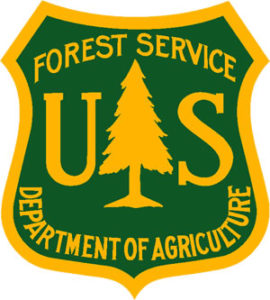 |
USDA Forest Service Landscape Scale Restoration (LSR) Grant Program supports projects that address priorities in each State’s Forest Action Plan. Eligible projects include landscape restoration practices that enhance forest sustainability, such as invasive species management, and integrate efforts to improve management of non-industrial private forest lands. All project proposals are submitted directly by the state forester. Only five proposals may be submitted per state. |
 |
USDA Natural Resources Conservation Service (NRCS) Conservation Innovation Grant Program supports the development of innovative approaches and technologies for accelerating conservation on agricultural lands. |
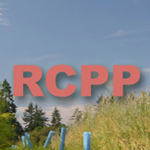 |
The Maryland Department of Natural Resources’ NRCS’ Regional Conservation Partnership Program (RCPP) promotes coordination between NRCS and its partners to deliver conservation assistance to producers and landowners. Financial assistance is provided to landowners in accordance to the rules of EQIP, CSP, ACEP, and HFRP./p> |
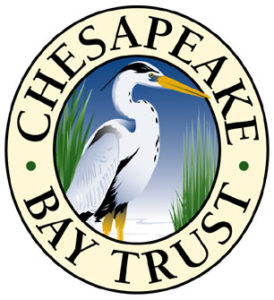 |
Chesapeake Bay Trust (CBT) Restoration and Retrofits Grant program funds projects that lead to demonstration-based restoration, community engagement, and environmental education. This program is Maryland specific. |
Ecosystem Service Markets
Why ecosystem service markets?
Ecosystem service markets can help fund the restoration and conservation of riparian forest buffers. Forests provide a full suite of goods and services that are vital to human health and livelihood. We call these ecosystem services. Many of these goods and services are traditionally viewed as free benefits to society, or “public goods.” This includes wildlife habitat and diversity, watershed services, carbon storage, and scenic landscapes, for example. Ecosystem service markets recognize riparian forest buffers as natural assets with economic and social value.
By implementing conservation actions, landowners can generate credits and sell them to organizations who voluntarily purchase the credits or entities like waste water treatment plants that need credits to maintain compliance with government-provided permits. A good first step in determining whether a property is eligible for market is to visit LandServer.
There are also opportunities to develop new markets to finance riparian forest buffer planting and maintenance. For example, the Environmental Policy Innovation Center developed an innovative financing strategy to incentivize greater riparian forest buffer planting to meet the Forest Buffers goal in the Chesapeake Bay Watershed Agreement. The proposed Riparian Forest Buffer Outcomes Fund would help overcome barriers and create new incentives to plant more buffers.
What are the existing ecosystem service markets in the Chesapeake Bay watershed?
Water Quality Trading
Maryland, Pennsylvania, and Virginia are currently operating water quality trading programs. Producers are eligible to generate nutrient credits after meeting established “baselines” for performance.
Stormwater Reduction Regulations
Under the recently adopted Chesapeake Bay TMDL, local governments are required to reduce stormwater runoff and associated pollutants as well as offset the potential pollutants associated with new growth and development. Developers and local governments face significant challenges meeting the new criteria. They will need to rely on offset approaches to address potential impacts. Producers can generate these offsets through a variety of practices including tree planting and implementation of riparian forest buffers.
MS4s or Municipal Separate Storm Systems
Discharges from MS4s are regulated by the states under the Clean Water Act as point sources. MS4 designated cities require a permit that requires certain actions and practices that may involve tree planting.
Maryland’s Forest Conservation Act
Maryland’s Forest Conservation Act is one of the oldest market-based conservation mechanisms in the Chesapeake region. In short, the Act requires developers to replace trees cut because of development through afforestation or reforestation. Forest banking is a conservation tool. It allows an owner to create and protect forest and then sell “mitigation credits” to developers seeking to comply with the Act.
Maryland’s Critical Area Protection Act
Established in 1984, the Critical Area Protection Act regulates land use within 1,000 feet of tidal waters and wetlands. The Act regulates forest cover like the Forest Conservation Act, but also mandates retention and mitigation for forest interior dwelling habitat, riparian forest buffers and stormwater. If developers are unable to meet the Act’s requirements on site, private mitigation banks can be used to provide offsets.
